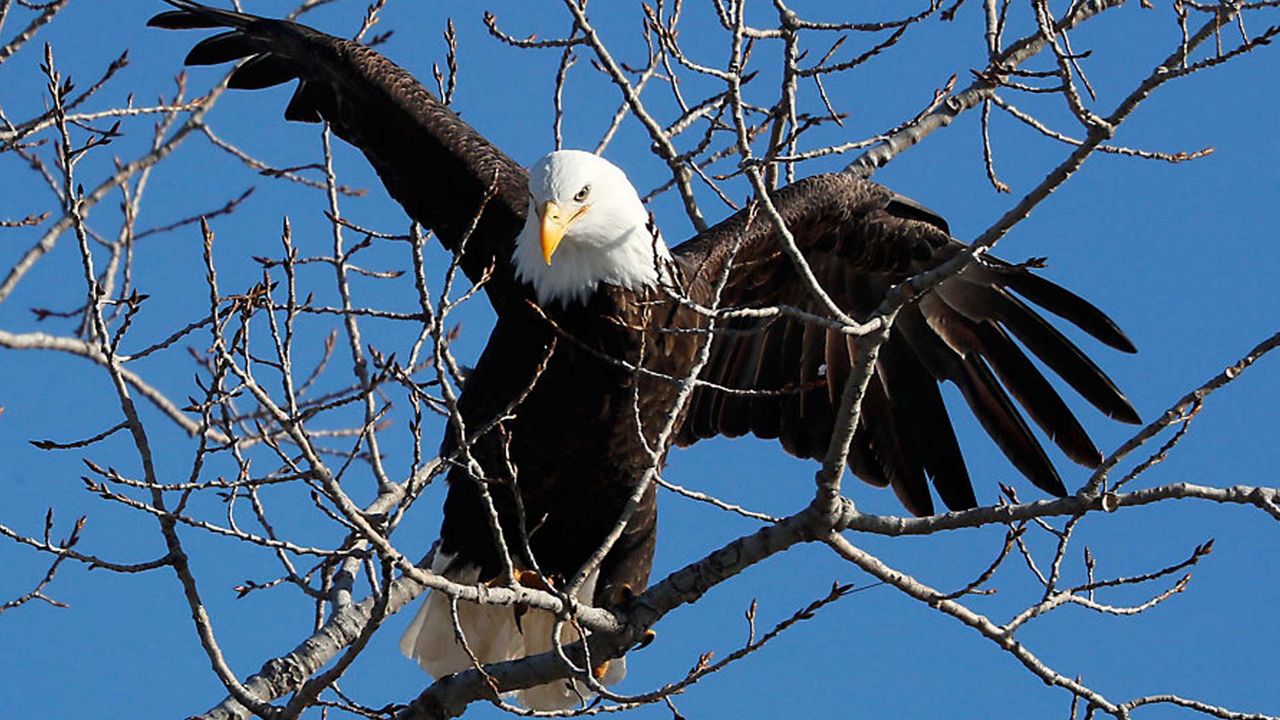Wintertime in St. Louis might keep you indoors, out of the cold. But, there’s a specific avian creature that seeks out this type of weather willingly, as well as the landscape of this region for its two bountiful rivers.
It doesn’t take an ornithologist to notice that bald eagles have found refuge from winter’s elements in this region for several decades.
Dan Zarlenga, with the Missouri Department of Conservation (MDC) St. Louis region, explains the reasons why bald eagles migrate here from Canada and the Great Lakes. “Fish are a prime source of food for bald eagles. As temperatures drop for prolonged periods of time in the areas north, many lakes and waterways freeze up, which drives the eagles south toward us in search of open water."
He also adds, "We are fortunate to have the two largest rivers in North America converging here, along with other rivers and big lakes. This provides excellent fishing for eagles."

The number of eagles in this region can vary year to year, depending on the weather.
"If waters freeze up north of us, we tend to get a lot of eagles here, and if waters up north remain open, we tend to see fewer migrating in," says Zarlenga.
The MDC conducts eagle nest surveys by air and by counting the number of active nests observed in the prime eagle habitat.
Zarlenga notes that in the nearly 15 years since surveys began, there has been a steady increase in permanent eagle nest counts. He says it jumped from 123 in 2008 to 617 in 2021.
As for wintering bald eagles, “numbers range from about 1500 to 3000 per year. Estimates can vary based on the coverage of the state, which varies each year.”
However, data has suggested bald eagle populations, permanent and migratory, are both rising in Missouri.
Want to see these spectacular birds in person near St. Louis? Well, right now is prime bald eagle season with the best viewings from December through February."
Grab the winter coat and a pair of binoculars and position yourself in an area with open water below a dam. Zarlenga suggests these spots for optimal viewing:
· The Audubon Center at Riverlands Migratory Bird Sanctuary in West Alton.
· Columbia Bottom Conservation Area in Spanish Lake. North America’s largest two rivers, the Missouri and the Mississippi, meet here. Look for eagles from the Missouri River boat ramp or roosting in trees on the area.
· Mississippi Lock and Dam #25 just north of Winfield. At just 45 minutes from St. Louis, it’s also the location of the Nature Conservancy’s Sandy Island Bald Eagle Sanctuary.
· Mississippi Lock and Dam #24 at Clarksville. This is an outstanding eagle viewing spot just an hour-and-a-half drive from St. Louis.



